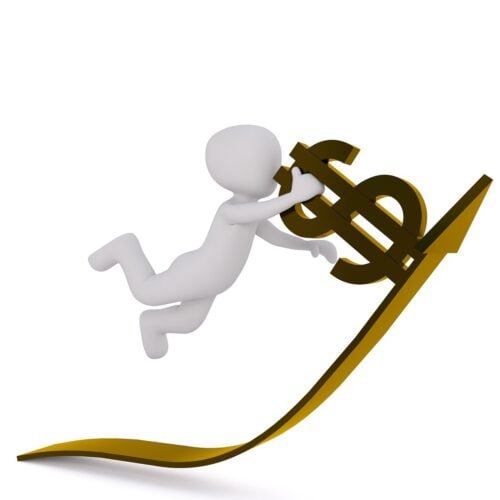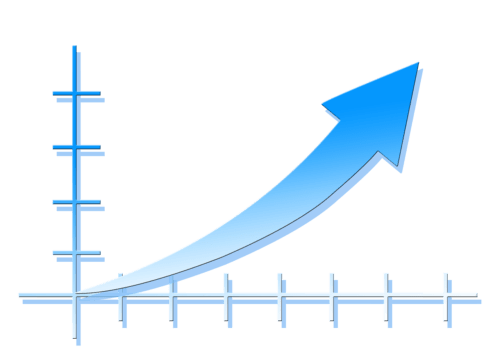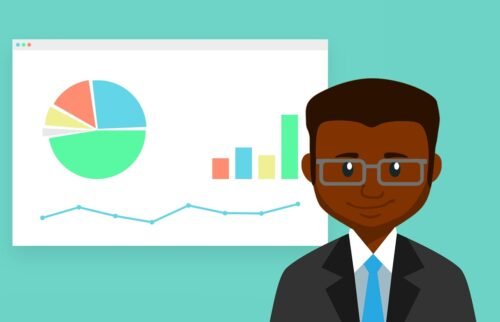In the realm of corporate decision-making, accurate business forecasting holds paramount importance. By analyzing historical data, market trends, and external factors, businesses can gain valuable insights into future market conditions. These insights enable organizations to make informed strategic decisions, mitigate risks, identify emerging opportunities, and ultimately achieve sustainable growth. With the dynamic nature of markets and increasing competition, businesses must rely on robust forecasting models to navigate the ever-changing business landscape. In this article, we will explore the significance and benefits of business forecasting and how it can shape the trajectory of organizations.

Definition of Business Forecasting
Business forecasting refers to the process of predicting future trends, patterns, and scenarios related to a company’s operations, finances, and markets. It involves analyzing historical data, market trends, and various other factors to make informed predictions about the future. Business forecasting plays a crucial role in helping organizations plan and make strategic decisions.
Importance of Business Forecasting
Business forecasting holds significant importance for organizations across different industries. It enables companies to anticipate changes in the market, identify emerging trends, and make proactive decisions. By having a clear understanding of future possibilities, businesses can allocate resources effectively, manage risks, and enhance decision making.
Uses of Business Forecasting
Business forecasting is utilized in various areas of an organization’s operations. It serves as a valuable tool for budgeting, production planning, inventory management, sales forecasting, and financial analysis. Additionally, business forecasting helps organizations identify potential opportunities and threats, improve demand forecasting, and enhance overall operational efficiency.
Process of Business Forecasting
The process of business forecasting involves several steps that guide the creation of accurate and reliable predictions. These steps include:
Data collection: Gathering relevant historical data and market information that will be used as the foundation for forecasting.
Analysis: Examining the collected data to identify trends, patterns, and relationships that can provide insights into future scenarios.
Forecasting method selection: Choosing an appropriate forecasting method based on the type of data, industry, and specific requirements.
Model development: Building mathematical models or utilizing forecasting software to create forecasts based on the selected method.
Validation: Evaluating the accuracy and reliability of the forecasted results by comparing them with actual outcomes.
Implementation: Applying the forecasts to relevant business areas, such as sales planning, budgeting, or inventory management.
Monitoring and adjustment: Continuously tracking the forecasted results and making necessary adjustments based on changing circumstances or new information.

Methods of Business Forecasting
Business forecasting methods can be classified into two broad categories: qualitative methods and quantitative methods.
Qualitative Methods
Qualitative methods rely on judgment, experience, and expert opinions to make forecasts. These methods are often used when historical data is limited or when subjective factors play a significant role. Some common qualitative methods include market research, surveys, executive opinions, and the Delphi method.
Quantitative Methods
Quantitative methods, on the other hand, utilize statistical and mathematical techniques to analyze historical data and make predictions. These methods are based on the assumption that historical patterns can be used to forecast future outcomes. Examples of quantitative methods include time series analysis, causal modeling, and regression analysis.
Time Series Analysis
Time series analysis is a quantitative method that involves analyzing historical data to identify patterns and trends over time. This method is used when forecasting relies on past data and assumes that future patterns will follow similar trends. Time series analysis includes techniques such as moving averages, exponential smoothing, and autoregressive integrated moving average (ARIMA) models.
Causal Modeling
Causal modeling is a quantitative method that aims to identify cause-and-effect relationships between various factors and the variable being forecasted. It takes into account both historical data and external factors to generate forecasts. Causal modeling techniques include regression analysis, correlation analysis, and econometric modeling.
Factors Affecting Business Forecasting
Several internal and external factors influence the accuracy and reliability of business forecasting.
Internal Factors
Internal factors refer to the characteristics and attributes specific to an organization. These factors include historical data availability, data quality, organizational structure, management decisions, and the availability of resources. An organization’s internal factors can impact the forecasting process by either providing a strong foundation for accurate predictions or introducing potential biases and limitations.
External Factors
External factors encompass the environmental and market forces that businesses operate within. These factors include economic conditions, market trends, political and regulatory changes, technological advancements, and competitive landscape. External factors can significantly impact business forecasting by introducing uncertainty, volatility, and unpredictable events that may deviate from historical patterns.

Common Challenges in Business Forecasting
While business forecasting offers substantial benefits, it also faces several challenges that organizations must overcome to create accurate predictions.
Data Accuracy and Reliability
One of the major challenges in business forecasting is ensuring the accuracy and reliability of the data used for analysis. Inaccurate or incomplete data can lead to faulty predictions and unreliable forecasts. It is crucial for organizations to invest in data collection, storage, and validation processes to improve the accuracy and reliability of their forecasts.
Changing Market Dynamics
The dynamic and constantly evolving nature of markets poses another challenge in business forecasting. Market trends, consumer behavior, and competitive landscapes can change rapidly, making it difficult to predict future scenarios accurately. Organizations need to monitor market dynamics closely and incorporate real-time data to adjust their forecasts accordingly.
Uncertain External Events
External events, such as natural disasters, economic crises, or political upheavals, can disrupt business operations and render existing forecasts obsolete. These events are often unexpected and can introduce high levels of uncertainty. Organizations must have contingency plans in place and remain flexible in their forecasting approach to adapt to unforeseen external events.
Benefits of Business Forecasting
Despite the challenges, business forecasting offers numerous benefits for organizations.
Resource Allocation
Accurate business forecasting enables organizations to allocate their resources effectively. By having a clear understanding of future demand, organizations can optimize their production, inventory, and workforce planning, ensuring that resources are utilized efficiently. This results in cost savings and improved operational performance.
Risk Management
Business forecasting plays a crucial role in risk management. By predicting potential risks and uncertainties, organizations can develop strategies to mitigate those risks, minimize losses, and protect their financial health. Forecasting allows businesses to identify potential threats and take proactive measures to avoid or minimize their impact.
Decision Making
Informed decision making is a key advantage of business forecasting. By providing insights into future scenarios, forecasts enable organizations to make strategic decisions with a clearer understanding of the potential outcomes. Whether it’s launching a new product, expanding into a new market, or adjusting pricing strategies, accurate forecasts help organizations make informed choices that align with their overall objectives.
Limitations of Business Forecasting
While business forecasting offers substantial benefits, it also has limitations that organizations must be aware of.
Inaccurate Data
The accuracy of business forecasts heavily relies on the quality and accuracy of the data used for analysis. If the data is outdated, incomplete, or contains errors, the forecasts may be inaccurate or misleading. To mitigate this limitation, organizations must invest in robust data collection and validation processes.
Unforeseen Events
Business forecasting cannot predict unforeseen events or black swan events that have significant impacts but are rare or impossible to anticipate. Natural disasters, economic crises, or sudden technological breakthroughs can disrupt business operations and render existing forecasts irrelevant. Organizations must be prepared to adapt quickly to unexpected events and continuously monitor and update their forecasts accordingly.
Assumptions and Biases
Business forecasting involves making assumptions about future trends and patterns based on historical data. These assumptions can introduce biases, particularly if they are influenced by subjective factors or personal opinions. Organizations need to actively monitor and challenge their assumptions and biases to ensure the accuracy and reliability of their forecasts.
Steps to Improve Business Forecasting
To improve the accuracy and reliability of business forecasting, organizations can take specific steps:
Use Multiple Forecasting Methods
Utilizing multiple forecasting methods can help organizations gain a more comprehensive view of the future. By combining qualitative and quantitative methods, organizations can leverage the strengths of each approach. This approach allows for cross-validation and reduces the impact of limitations and biases present in a single method.
Continuously Monitor and Update Forecasts
Business environments are dynamic, and forecasts should be treated as living documents that require regular monitoring and updates. By incorporating real-time data, market intelligence, and feedback from stakeholders, organizations can adjust their forecasts and make more accurate predictions.
Collaborate with Key Stakeholders
Collaboration with key stakeholders, including departments, managers, and external experts, can enhance the quality of business forecasts. By involving different perspectives and expertise, organizations can improve the accuracy and reliability of their forecasts. Collaboration also promotes buy-in and facilitates better decision making based on forecasted results.
Technology and Business Forecasting
Advancements in technology have revolutionized business forecasting, enabling organizations to leverage powerful tools and techniques to enhance their predictions.
Data Analytics
Data analytics plays a significant role in business forecasting. With the availability of large volumes of data and advanced analytical tools, organizations can extract valuable insights and trends to improve the accuracy of their forecasts. Data analytics techniques such as data mining, predictive modeling, and pattern recognition enable organizations to make data-driven decisions and create more accurate forecasts.
Artificial Intelligence
Artificial Intelligence (AI) has emerged as a powerful tool for business forecasting. AI algorithms can analyze vast amounts of data, identify complex patterns, and make predictions with a high degree of accuracy. Machine learning algorithms, neural networks, and deep learning techniques enable organizations to automate the forecasting process and generate more precise forecasts based on historical and real-time data.
Machine Learning
Machine learning algorithms can analyze historical data and identify patterns that are hard for humans to detect. This allows for more accurate predictions based on historical trends and observations. Machine learning algorithms can be used in various areas of business forecasting, such as demand forecasting, sales forecasting, and financial forecasting.
Examples of Successful Business Forecasting
Several organizations have successfully harnessed the power of business forecasting to drive their success.
Amazon’s Demand Forecasting
Amazon utilizes sophisticated algorithms and machine learning techniques to forecast customer demand accurately. By analyzing customer behavior, historical sales data, and market trends, Amazon can predict demand and optimize its inventory and distribution channels accordingly. This enables Amazon to fulfill customer orders efficiently and minimize stock-outs.
Netflix’s Content Recommendation
Netflix leverages data analytics and artificial intelligence to forecast user preferences and recommend content. By analyzing user behavior, viewing patterns, and feedback, Netflix can predict which content will be most appealing to its subscribers. This enables Netflix to personalize the user experience and improve customer satisfaction.
Walmart’s Inventory Management
Walmart uses advanced forecasting techniques to manage its extensive inventory efficiently. By analyzing historical sales data, weather patterns, and market trends, Walmart can foresee future demand and optimize its inventory levels. This reduces stock-outs, minimizes carrying costs, and enhances overall operational efficiency.
Conclusion
Business forecasting plays a vital role in helping organizations anticipate changes, make informed decisions, and allocate resources effectively. By leveraging both qualitative and quantitative methods, organizations can gain a comprehensive view of future scenarios. While business forecasting faces challenges such as data accuracy, changing market dynamics, and unforeseen events, advancements in technology, such as data analytics, artificial intelligence, and machine learning, are enhancing the accuracy and reliability of forecasts. By continuously monitoring and updating forecasts, collaborating with key stakeholders, and leveraging technological advancements, organizations can improve their business forecasting capabilities and drive success in an ever-changing business landscape.
